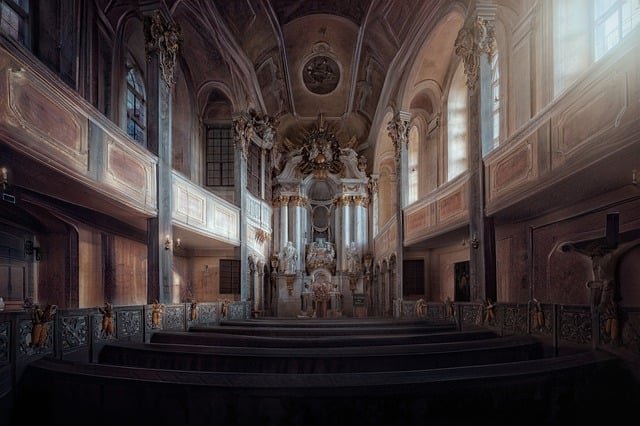The Glorious Revolution of England (1688-1689)
The Glorious Revolution of November 1688, the Invasion also known as the or Glorious Crossing by the Dutch, was the deposition of James II and VII, king of England, Scotland and Ireland and replacement by his daughter Mary II and her husband, William III of Orange, stadholder and de facto ruler of the Dutch Republic for a joint monarch. A term first used by John Hampden in late 1689, Historian Jeremy Black suggests it can be seen as both the last successful invasion of England and also an internal coup.
Upon the death of his older brother King Charles II, despite his Catholicism, James became king of England, Scotland and Ireland in February 1685. Over the next three years, he alienated his supporters by suspending the Scottish and English Parliaments in 1685 and ruling by personal decree. Despite this, it was considered a short-term issue, as James was 52, and since his second marriage was childless after 11 years, the heir presumptive was his Protestant daughter Mary.
Two events in June 1688 turned dissent into a political crisis. The first was the birth of James Francis Edward on 10 June, displacing Mary as heir which created the prospect of a Catholic dynasty. The second was the prosecution of the Seven Bishops on 15 June; one in a series of perceived assaults on the Church of England, their acquittal on the 30th sparked anti-Catholic riots and destroyed James’s political authority. The combination convinced a broad coalition of English politicians to issue an Invitation to William, inviting him to secure the English throne for his wife Mary.
With Louis XIV of France preparing to attack the Dutch, William viewed this as an opportunity to secure English resources for the Nine Years’ War, which began in September 1688. On 5 November, he landed in Brixham in Torbay with 14,000 men. As he advanced on London, most of the 30,000-strong Royal Army joined him. James went into exile on 23 December and in April 1689, Parliament made William and Mary joint monarchs of England and Ireland. A separate but similar Scottish settlement was made in June.
The Background
After the accession of James II in 1685, his overt Roman Catholicism alienated the majority of the population. In 1687 he issued a Declaration of Indulgence, suspending the penal laws against Nonconformists and recusants, and in April 1688 ordered that a second Declaration of Indulgence be read from every pulpit on two successive Sundays. William Sancroft, the archbishop of Canterbury, and six other bishops petitioned him against this and were prosecuted for seditious libel.
Their acquittal almost coincided with the birth of a son to James’s Roman Catholic queen, Mary of Modena (June). This event promised an indefinite continuance of his policy and brought discontent to a head. Seven eminent Englishmen, including one bishop and six prominent politicians of both Whig and Tory persuasions, wrote to William of Orange, inviting him to come over with an army to redress the nation’s grievances.

King James II
Intervention of the Dutch Republic
In 1677, James II’s elder daughter and heir Mary married her Protestant cousin William of Orange, The Stadtholder of the main provinces of the Dutch Republic. The two initially shared common objectives in wanting Mary to succeed her father, while French ambitions in the Spanish Netherlands threatened both English and Dutch trade. Although William sent James troops to help suppress the 1685 Monmouth Rebellion, their relationship deteriorated thereafter.
In April 1688, King Louis XIV of France announced tariffs on Dutch herring imports, along with plans to support the Royal Navy in the English Channel. James immediately denied making any such request, but fearing it was the prelude to a formal alliance, the Dutch began preparing a military intervention. On the pretext of needing additional resources to deal with French privateers, in July the States General authorised an additional 9,000 sailors and 21 new warships.
By 1688, however, a great European coalition had begun to form to call for a halt to aggressions. Its prospects depended partly upon England. Thus, having been in close touch with the leading English malcontents for more than a year, William accepted their invitation.
Dutch preparations, though carried out with great speed, could not remain secret. The English envoy Ignatius White, the Marquess d’Albeville, warned his country: “an absolute conquest is intended under the specious and ordinary pretences of religion, liberty, property and a free Parliament”. Louis threatened an immediate declaration of war if William proceeded and sent James 300,000 livres.
Embarkations, started on 22nd of September (Gregorian calendar), had been completed on 8 October, and the expedition was that day openly approved by the States of Holland; the same day James issued a proclamation to the English nation that it should prepare for a Dutch invasion to ward off conquest. On 30 September/10 October (Julian/Gregorian calendars) William issued the Declaration of The Hague (actually written by Fagel), of which 60,000 copies of the English translation by Gilbert Burnet were distributed after the landing in England, in which he assured that his only aim was to maintain the Protestant religion, install a free parliament and investigate the legitimacy of the Prince of Wales. He would respect the position of James. William declared:
It is both certain and evident to all men, that the public peace and happiness of any state or kingdom cannot be preserved, where the Laws, Liberties, and Customs, established by the lawful authority in it, are openly transgressed and annulled; more especially where the alteration of Religion is endeavoured, and that a religion, which is contrary to law, is endeavoured to be introduced; upon which those who are most immediately concerned in it are indispensably bound to endeavour to preserve and maintain the established Laws, Liberties and customs, and, above all, the Religion and Worship of God, that is established among them; and to take such an effectual care, that the inhabitants of the said state or kingdom may neither be deprived of their Religion, nor of their Civil Rights.
— William of Orange.
(Source: www.wikipedia.org)

William III landing at Brixham
The invasion fleet consisted of 463 ships and 40,000 men on board, roughly twice the size of the Spanish Armada, with 49 warships, 76 transports carrying soldiers and 120 for the five thousand horses required by the cavalry. Having departed on 19/29th of October, the expedition was halfway across the North Sea when it was scattered by a gale, forcing the Brill back to Hellevoetsluis on 21/31st of October. William refused to go ashore and the fleet reassembled, having lost only one ship but nearly a thousand horses; press reports deliberately exaggerated the damage and claimed the expedition would be postponed till the spring.
Happy to help King James II into exile, William III recommended he relocate to Ham, London, largely because it was easy to escape from. James suggested Rochester instead, allegedly because his personal guard was there, in reality conveniently positioned for a ship to France. On 18th of December, he left London with a Dutch escort as William entered, cheered by the same crowds who greeted his predecessor two days before. On 22nd , Berwick arrived in Rochester with blank passports allowing them to leave England, while his guards were told that if James wanted to leave, “they should not prevent him, but allow him to gently slip through”. Although Ailesbury and others begged him to stay, he left for France on 23rd of December.
The Revolution

King William III & Queen Mary II
James’ departure significantly shifted the balance of power in favour of William, who took control of the provisional government on 28 December. Elections were held in early January for a Convention Parliament which assembled on 22nd; the Whigs had a slight majority in the Commons, the Lords was dominated by the Tories but both were led by moderates. Archbishop Sancroft and other Stuart loyalists wanted to preserve the line of succession; although they recognised keeping James on the throne was no longer possible, they preferred Mary either be appointed his regent or sole monarch.
The next two weeks were spent debating how to resolve this issue, much to the annoyance of William, who needed a swift resolution; the situation in Ireland was rapidly deteriorating, while the French had over-run large parts of the Rhineland and were preparing to attack the Dutch. At a meeting with Danby and Halifax on 3rd of February, he announced his intention to return home if the Convention did not appoint him joint monarch, while Mary let it be known she would only rule jointly with her husband. Faced with this ultimatum, on 6 February Parliament declared that in deserting his people James had abdicated and thus vacated the crown, which was therefore offered jointly to William and Mary.
Historian Tim Harris argues the most radical act of the 1688 Revolution was breaking the succession and establishing the idea of a “contract” between ruler and people, a fundamental rebuttal of the Stuart ideology of divine right. While this was a victory for the Whigs, other pieces of legislation were proposed by the Tories, often with moderate Whig support, designed to protect the Anglican establishment from being undermined by future monarchs, including the Calvinist William. The Declaration of Right was a tactical compromise, setting out where James had failed and establishing the rights of English citizens, without agreeing their cause or offering solutions. In December 1689, this was incorporated into the Bill of Rights.
However, there were two areas that arguably broke new constitutional ground, both responses to what were viewed as specific abuses by James. First, the Declaration of Right made keeping a standing army without Parliamentary consent illegal, overturning the 1661 and 1662 Militia Acts and vesting control of the military in Parliament, not the Crown. The second was the Coronation Oath Act 1688; the result of James’ perceived failure to comply with that taken in 1685, it established obligations owed by the monarchy to the people. At their coronation on 11 April, William and Mary swore to “govern the people of this kingdom of England, and the dominions thereunto belonging, according to the statutes in Parliament agreed on, and the laws and customs of the same”. They were also to maintain the Protestant Reformed faith and “preserve inviolable the settlement of the Church of England, and its doctrine, worship, discipline and government as by law established.”
King William III and Queen Mary II ruled the England, Scotland and Ireland for 5 years. After the death of Mary in 1694, William ruled England until his death in 1702. Mary’s younger sister Anne, become the queen of England, Scotland and Ireland.
Written by: Isira Direcksze




